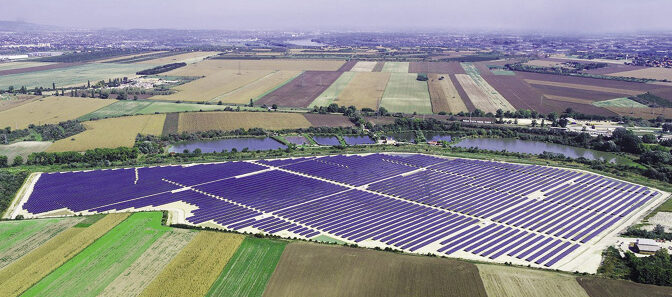Hungary deployed 1.6 GW of solar in 2023, according to new figures released by the Hungarian government. Last year’s increase is a calendar-year record for Hungary and more than one and half times the capacity additions recorded in 2022.
It takes the country’s total solar capacity to more than 5.6 GW. Preliminary figures from transmission system manager MAVIR states Hungary’s total solar capacity equate to 3.3 GW of industrial solar power plants and 2.3 GW of household-sized installations.
Hungary posted growth in terms of large-scale and residential solar capacity last year. The country’s largest solar power plant to date was connected to the grid, while the number of small, household-sized power plants surpassed a quarter of a million. According to census data, more than one-quarter of residential properties of at least 100 square meters built after 2010 now have solar panels.
In 2024, the Hungarian government says it will continue to support the growth of residential PV through the soon-to-be-launched Napenergia Plusz Program, a grant scheme for the installation of modern solar panel and storage systems with a total budget of HUF 75.8 billion ($218 million). The scheme, which is expected to support over 15,000 households, opens for applications later this month.
Kinga Máté, a Hungarian legal analyst, told pv magazine that the additional 1.6 GW is a “significant and commendable achievement,” but warned “the tightening of foreign direct investment (FDI) rules, particularly the introduction of a pre-emption right for the Hungarian State in solar power plant investments, presents a notable challenge.”
Popular content
“Another novelty introduced by the amendment of the FDI Decree is the more precise description of the solar investments concerned, namely strategic companies that are to be acquired by a foreign investor and have electricity generation registered as their main or other activity in the company register,” Máté said. “These restrictive measures may dampen the enthusiasm of foreign investors, potentially limiting the scope of international transactions in Hungary's renewable energy sector. It is a factor that should be considered in every business strategy.”
There are also concerns that grid congestion could hamper the rollout of large-scale solar in Hungary. In June, the president of the Hungarian Photovoltaic Industry Association, Ádám Szolnoki, told pv magazine that 3 GW of projects that submitted applications in 2022 were told in May that that would not be able to connect before 2028. But he said there is ab0ut 5 GW of allocated utility-scale PV capacity set for construction in Hungary over the next four to five years.
Hungary has set a target of 12 GW of solar capacity by the start of the next decade.
This content is protected by copyright and may not be reused. If you want to cooperate with us and would like to reuse some of our content, please contact: editors@pv-magazine.com.


5 comments
By submitting this form you agree to pv magazine using your data for the purposes of publishing your comment.
Your personal data will only be disclosed or otherwise transmitted to third parties for the purposes of spam filtering or if this is necessary for technical maintenance of the website. Any other transfer to third parties will not take place unless this is justified on the basis of applicable data protection regulations or if pv magazine is legally obliged to do so.
You may revoke this consent at any time with effect for the future, in which case your personal data will be deleted immediately. Otherwise, your data will be deleted if pv magazine has processed your request or the purpose of data storage is fulfilled.
Further information on data privacy can be found in our Data Protection Policy.